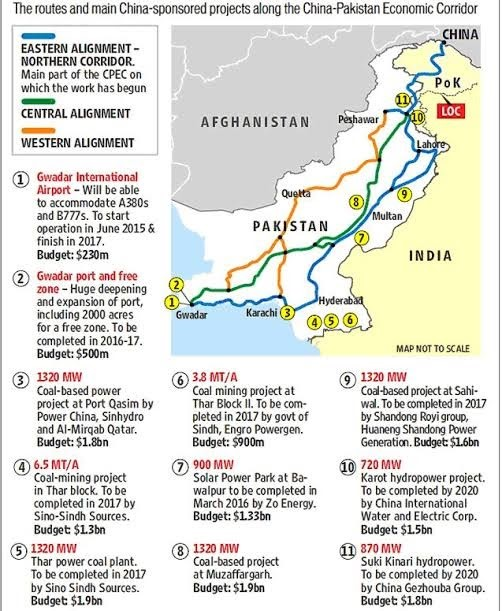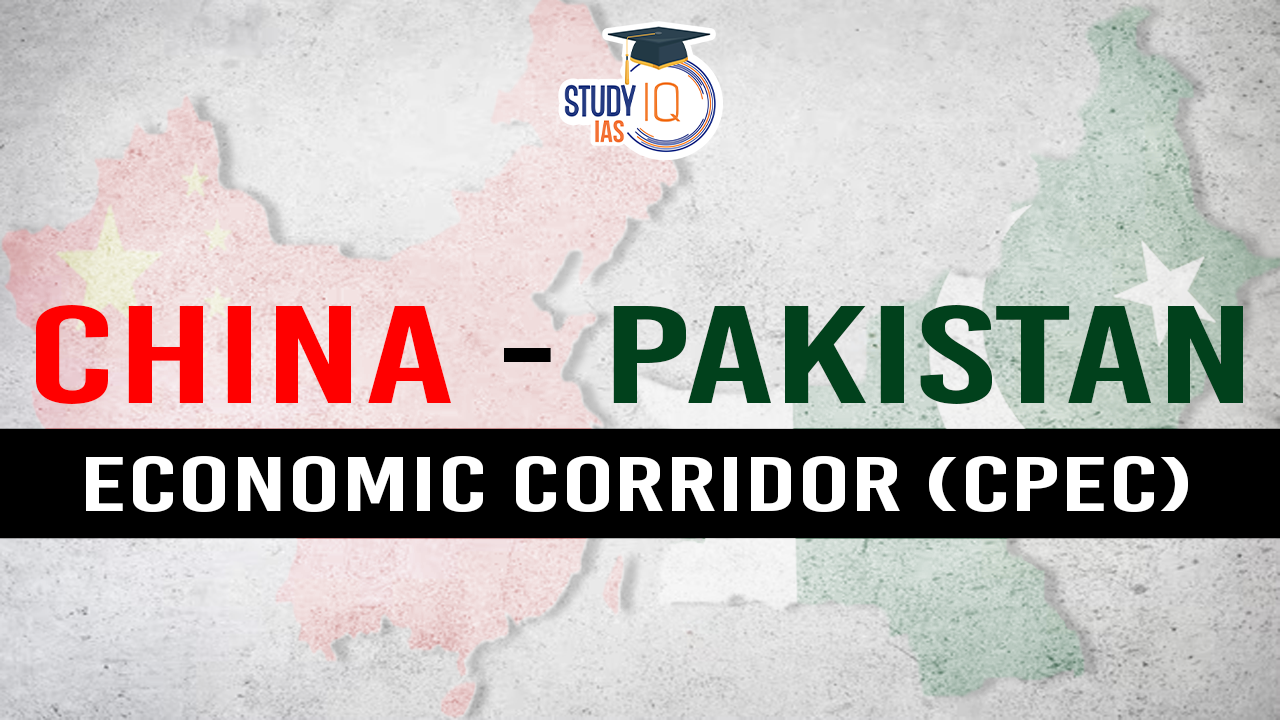Table of Contents
Context: Pakistan and China vowed to protect the China-Pakistan Economic Corridor (CPEC) from its “detractors and adversaries”.
China-Pakistan Economic Corridor (CPEC)
- CPEC is a comprehensive 3,000-km infrastructure network that connects China’s northwest Xinjiang Uygur Autonomous Region with Gwadar Port in Pakistan’s western province of Balochistan.
- Launched in 2013, the BRI seeks to connect Southeast Asia, Central Asia, the Gulf region, Africa, and Europe through a series of interconnected land and maritime routes.

- This project is a collaborative effort between Pakistan and China, designed to enhance connectivity within Pakistan through the development of highways, railways, and pipelines. It also includes energy, industrial, and other infrastructural projects.
- CPEC will facilitate China’s access to the Middle East and Africa via Gwadar Port, thereby extending its reach to the Indian Ocean.
- Concurrently, China will aid Pakistan in addressing its energy shortages and bolstering its struggling economy.
- CPEC forms a crucial component of the Belt and Road Initiative (BRI).
Impact of CPEC on India
- India’s Sovereignty: India has consistently opposed CPEC as it traverses through the Gilgit-Baltistan region in Pakistan-occupied Kashmir, a territory claimed by India.
- The corridor is viewed as an alternate economic pathway for the Kashmir Valley, which is on the Indian side of the border.
- Successful implementation of CPEC might reinforce the international perception of this region as part of Pakistani territory, thereby weakening India’s claim over the 73,000 sq km area inhabited by over 1.8 million people.
- Chinese Control Over Trade Routes: Major US East Coast ports currently rely on the Panama Canal for trade with China.
- CPEC could provide a shorter and more cost-effective route for trade between North and Latin America, potentially allowing China to influence international trade terms across the Atlantic and Pacific oceans.
- The Belt and Road Initiative (BRI) aims to enhance China’s connectivity with Eurasia through a network of ports, roads, and railways, perceived as a strategy to extend China’s political influence.
- CPEC represents a significant advancement in this strategy, potentially boosting China’s dominance in regional trade leadership.
- Chinese ‘String of Pearls’ Strategy: China’s strategic presence in ports like Chittagong (Bangladesh), Hambantota (Sri Lanka), Port Sudan (Sudan), and others in the Maldives, Somalia, and Seychelles, coupled with the control of Gwadar port, could lead to Chinese dominance over the Indian Ocean.


 Operation Baam: Baloch Separatist Group ...
Operation Baam: Baloch Separatist Group ...
 National Register of Indian Citizens (NR...
National Register of Indian Citizens (NR...
 World Population Day 2025, Themes, Histo...
World Population Day 2025, Themes, Histo...





















